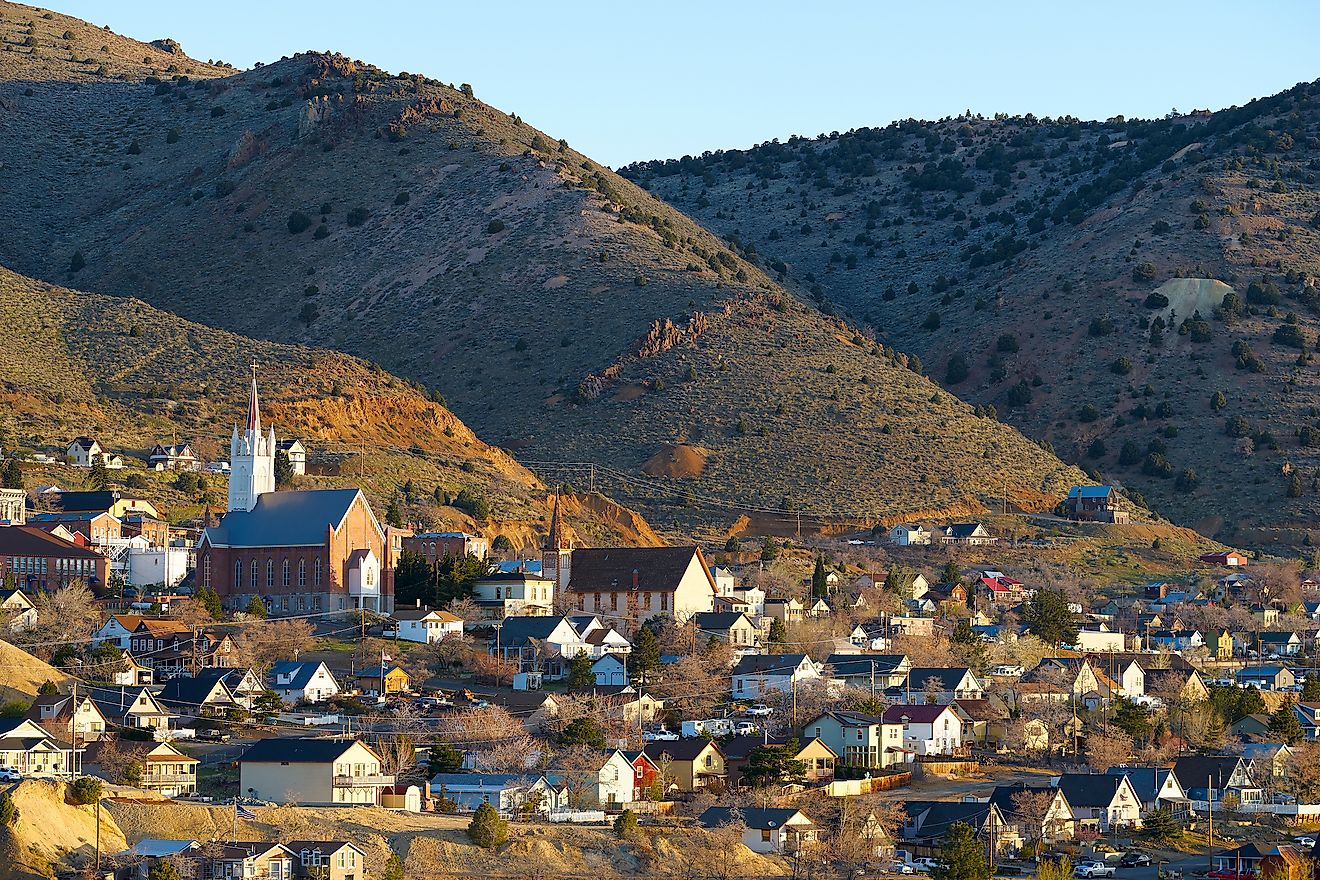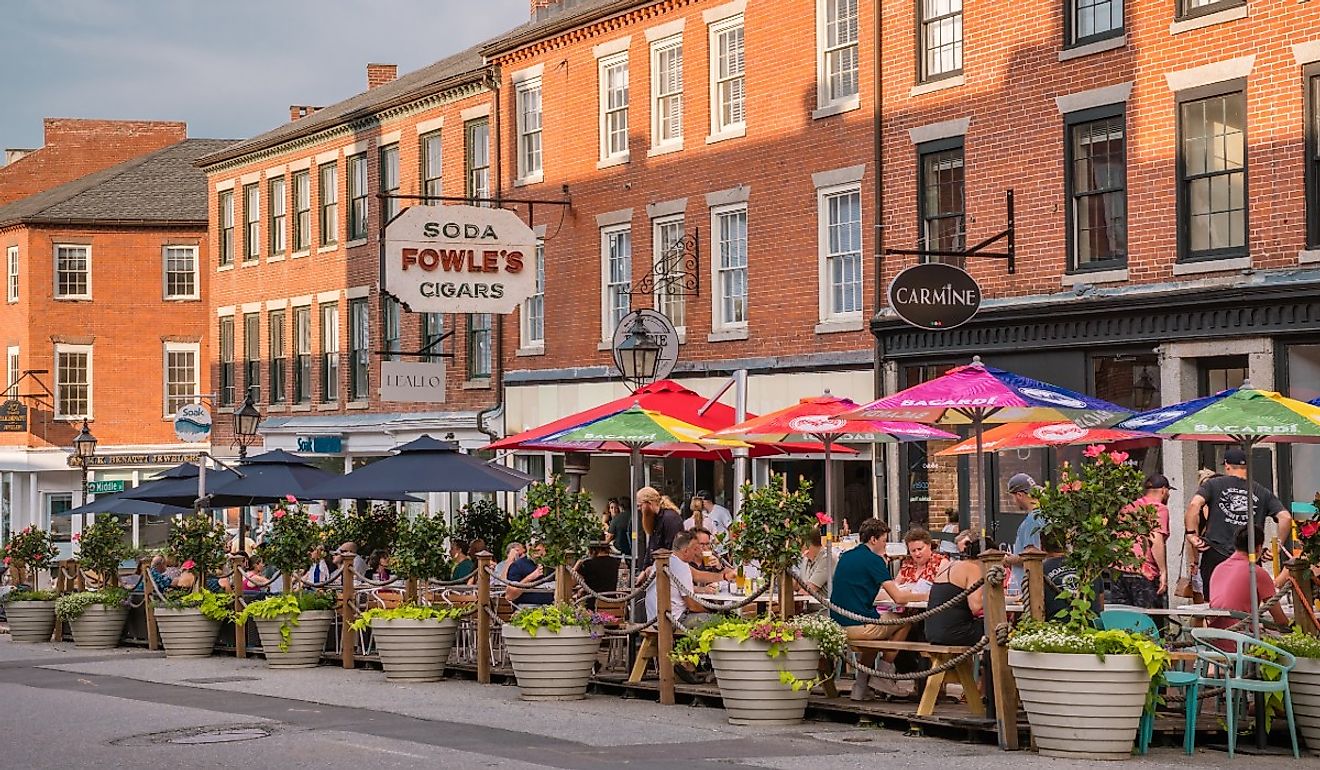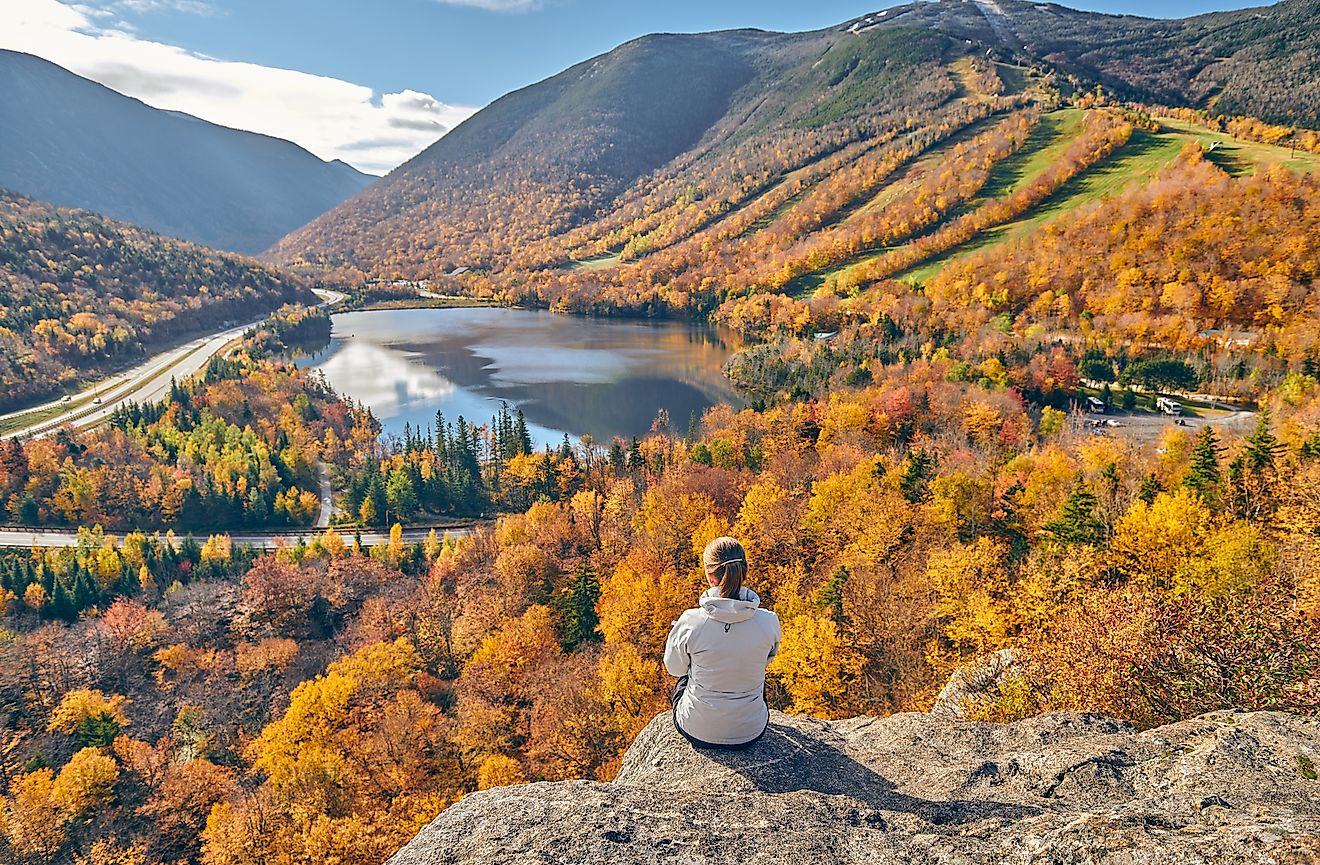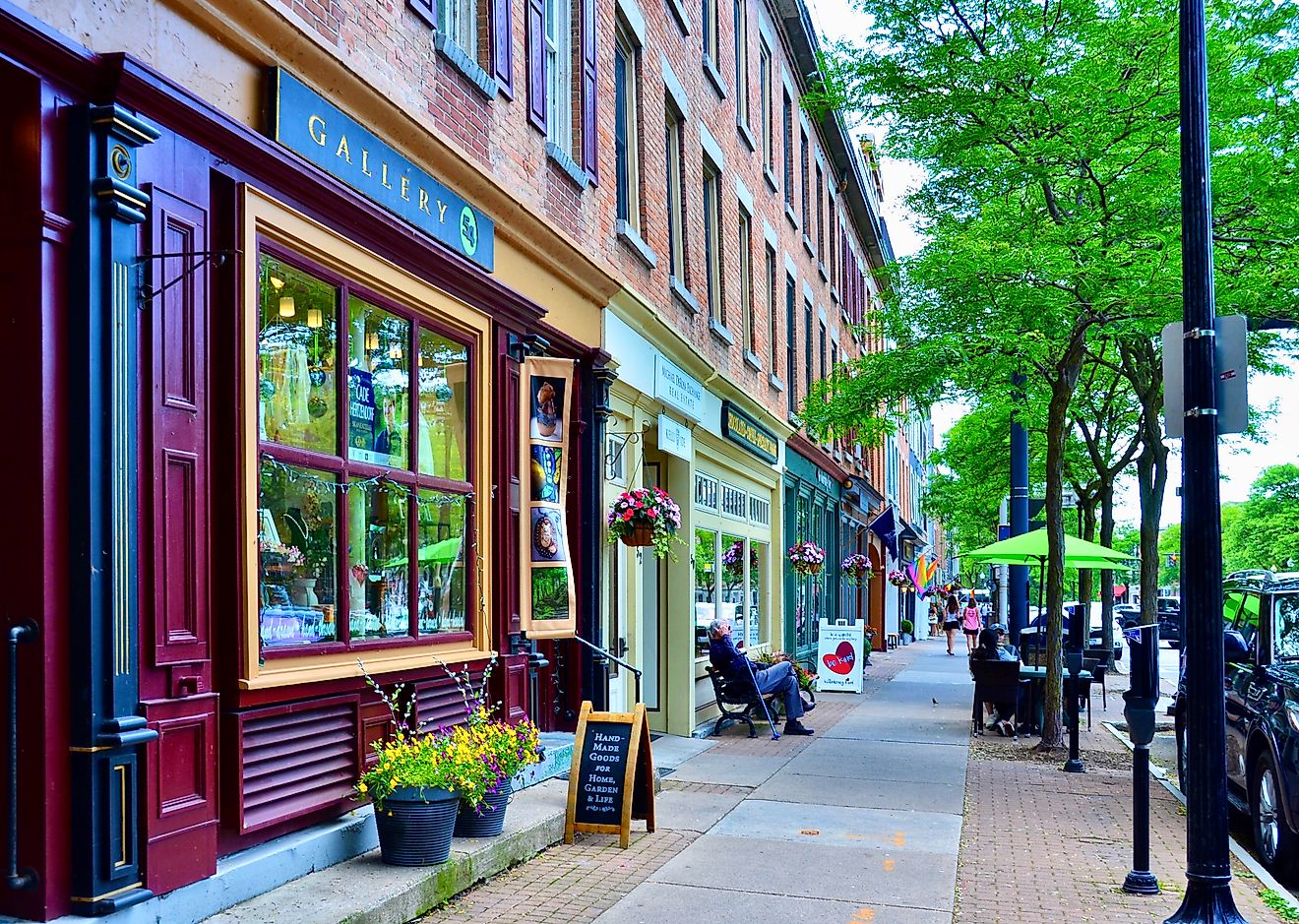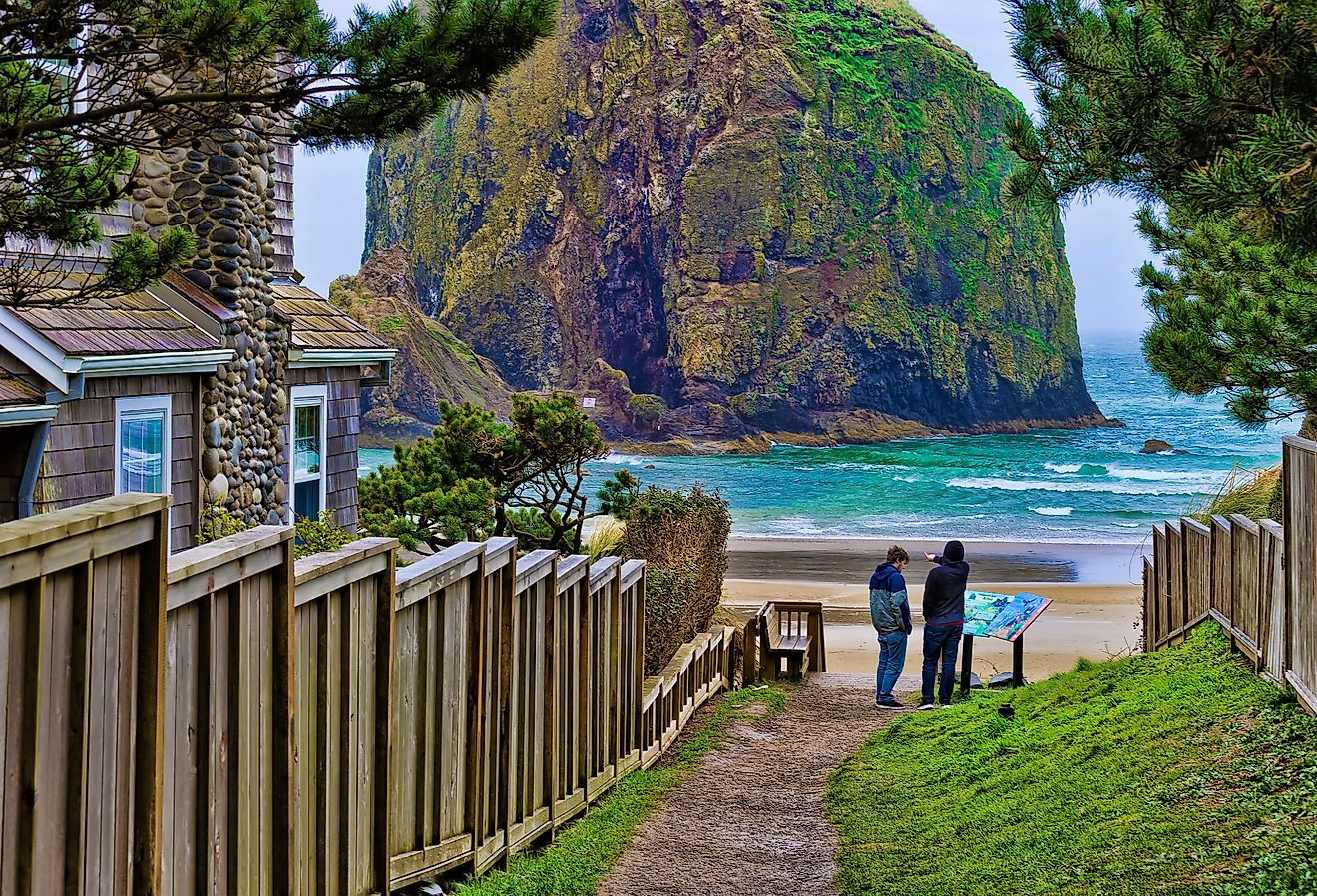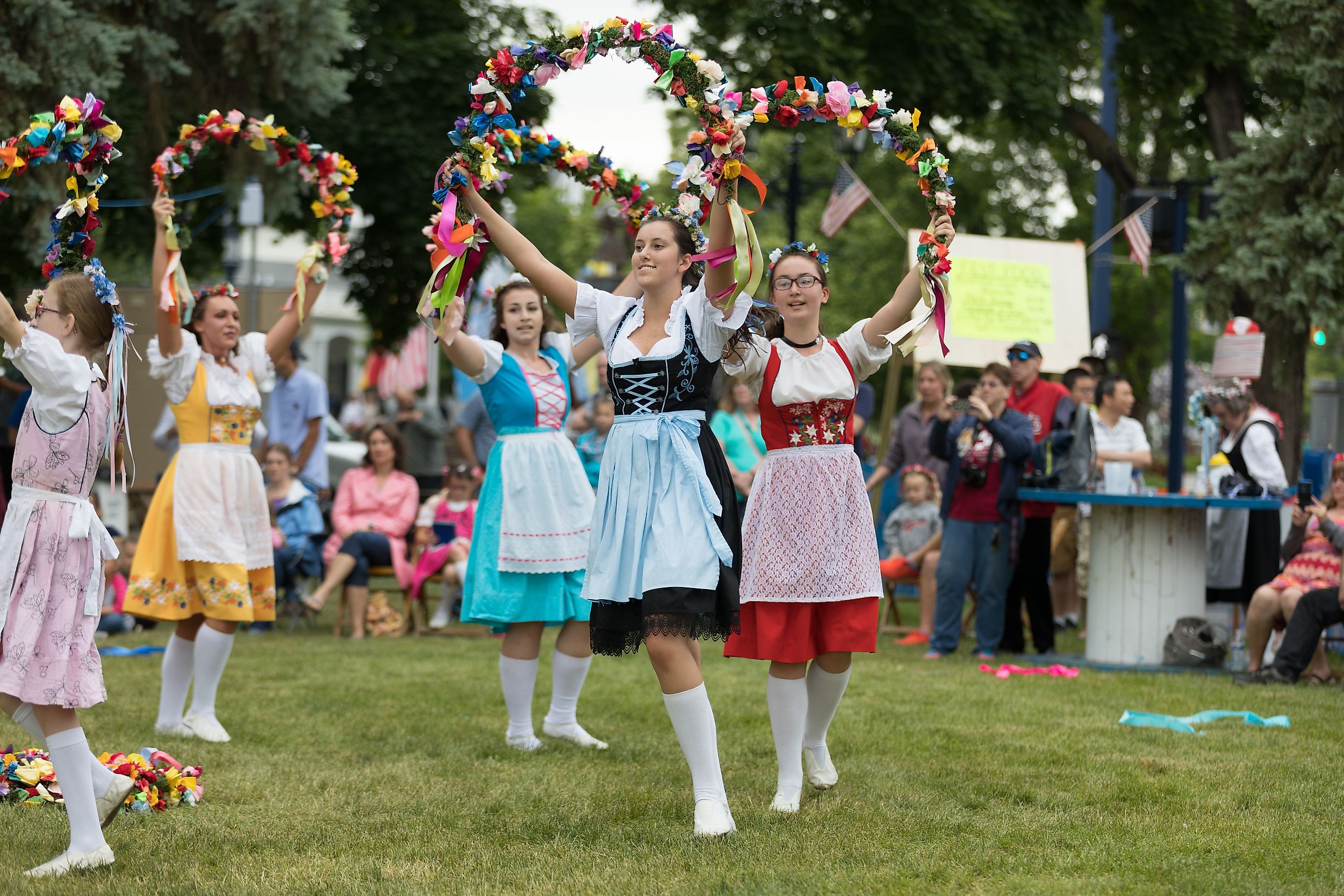
9 Quirkiest Michigan Towns To Visit In 2025
Michigan’s marketing team loves to pitch sand-dune drives and college-town breweries, but the state’s strangest stories lie off the interstate in hamlets where local bylaws and folklore outmuscle population counts. Picture a hand-cranked ferry still earning its Coast Guard inspection, a town that issues joke diplomas signed "Mayor of Hell," and a copper-rush port that now measures light pollution instead of ore: these places operate like laboratory experiments in civic eccentricity.
Each destination on this list maintains a niche economy, whether built on asparagus races, fudge theatrics, or overnight lighthouse rentals, that resists franchise creep and suburban sameness. Read on for nine Michigan towns that prove weird is a renewable resource.
Caseville

Every August, Caseville turns into a coastal parody of Key West. Its 10-day "Cheeseburger in Caseville" festival draws thousands to a village of fewer than 700 residents, transforming the downtown strip into a chaotic stretch of Hawaiian shirts, inflatable parrots, and beachfront grill-offs. Launched in 1999, the festival is a tribute to Jimmy Buffett and Lake Huron escapism, complete with a satirical "Parade of Fools" that winds through Main Street. Beyond the festival, Caseville’s identity is deeply tied to its marina culture and eccentric seasonal population, which swells dramatically in summer due to its RV parks and boat slips.
The Caseville Historical Museum, housed in the former Michigan Bell Telephone building, offers records and artifacts from the logging and fishing industries. For lunch, Walt’s Restaurant serves broasted chicken and perch sandwiches in a no-frills dining room with boat flags tacked to the walls. At sunset, take the breakwater walk at Caseville County Park, where the channel lighthouse casts a silhouette against Lake Huron.
Colon
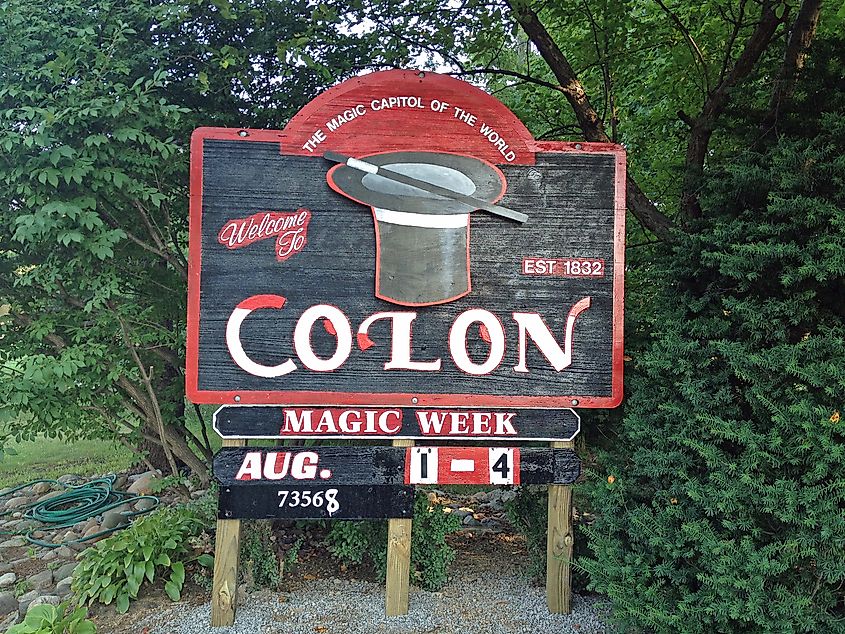
Colon has only one traffic light, but more professional magicians per capita than any town in the country. Known as the "Magic Capital of the World," Colon has been a hub for illusionists since the 1920s, when famed magician Harry Blackstone Sr. made it his summer home. The town is home to Abbott’s Magic Company, a functioning magic supply manufacturer and showroom where props are still made by hand. Colon also has a magician’s cemetery with over 30 performers buried under gravestones carved with wands, top hats, and rabbits.
Visitors can attend the annual Abbott’s Magic Get-Together in early August, a four-day event featuring lectures, stage shows, and a dealer’s room inside the Colon High School gym. For a quieter visit, the Magic Walk of Fame along Blackstone Avenue features sidewalk plaques honoring performers like Neil Foster and Duke Stern. Dawn’s Café on St. Joseph Street serves biscuits with sausage gravy and rotates through magician-themed specials during festival season. To experience the town from the water, rent a paddleboat at Randall Park on Palmer Lake.
Copper Harbor
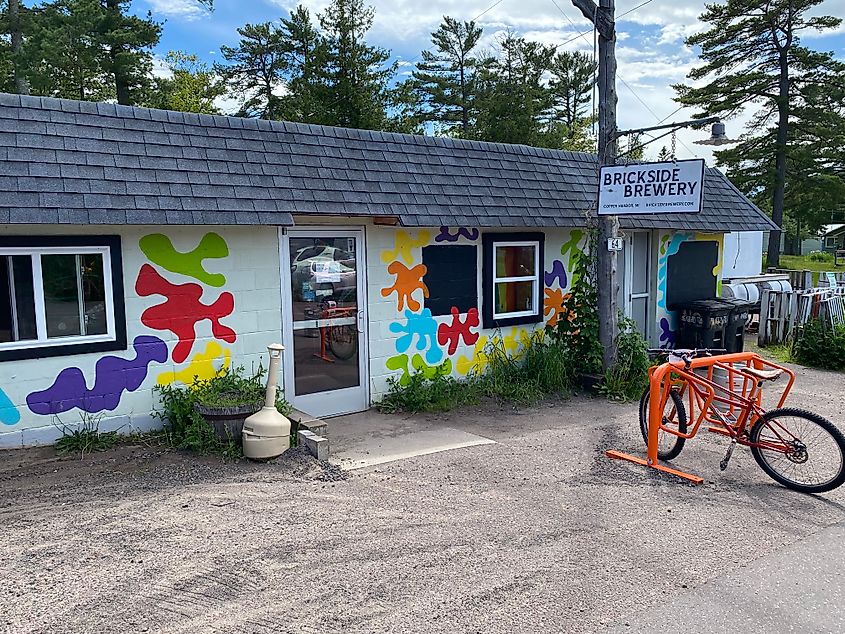
Copper Harbor is the northernmost town in Michigan, located at the tip of the Keweenaw Peninsula where US-41 ends in a dead-end loop. Its remoteness, population under 150, and lack of chain businesses have preserved a local economy built on geology, stargazing, and singletrack trails. The town sits atop some of the oldest exposed rock on Earth, over a billion years old, and was once a major port during Michigan’s copper rush. The Keweenaw Dark Sky Park, established in collaboration with Michigan Tech, is one of the few International Dark Sky Sanctuaries in the Midwest, drawing astrophotographers during the fall aurora season.
You can ride the Copper Harbor Trails system, a 37-mile IMBA Silver-Level network that includes the "Overflow" downhill flow line with lake views at every switchback. The Brickside Brewery on Gratiot Street serves beer made with Lake Superior water and includes small-batch experimental runs like spruce-tip IPAs. Fort Wilkins Historic State Park offers access to restored 1840s army buildings with original artifacts and military demonstrations. For food, the Tamarack Inn serves pasties and whitefish chowder on a rotating lunch menu.
Empire

Empire holds an annual festival dedicated entirely to asparagus. The Empire Asparagus Festival, held each May since 1974, includes a "Stalk Stomp" footrace, asparagus poetry, and a parade led by a costumed vegetable mascot. The event includes dishes such as asparagus ice cream and pickled asparagus Bloody Marys, with local farms like Norconk Asparagus contributing to the supply. Empire sits at the southern gateway of Sleeping Bear Dunes National Lakeshore, but the town’s independent identity is built around agricultural pride and its role as a supply base for seasonal park staff and hikers.
Visitors can hike the Empire Bluff Trail, a 1.5-mile out-and-back path that overlooks Lake Michigan and includes exposed glacial moraine. The Grocer’s Daughter Chocolate shop on M-22 offers truffles made with local berries, herbs, and honey. Joe’s Friendly Tavern on Front Street serves smoked whitefish sandwiches and hosts a late-spring asparagus fry tied to the festival. The Empire Area Museum Complex preserves 19th-century tools, fishing gear, and photographs, with a display dedicated to the former Empire Air Force Station radar base.
Saugatuck

Saugatuck operates one of the last hand-cranked chain ferries in the country. The Saugatuck Chain Ferry, built in 1838 and still manually powered by operators turning a crank attached to a submerged chain, crosses the Kalamazoo River in under five minutes and connects downtown to the base of Mount Baldhead. The town’s reputation as the “Art Coast of Michigan” dates back to 1910 with the founding of Ox-Bow School of Art, affiliated with the School of the Art Institute of Chicago. Artist residencies still run each summer, and galleries are concentrated along Butler and Culver Streets.
The Saugatuck Center for the Arts programs rotating exhibitions and independent film screenings year-round, with a seasonal farmers market in its outdoor pavilion. Oval Beach, accessed via Perryman Street or a short walk from the ferry landing, includes wind-formed dunes and is managed by the city rather than the state park system. Uncommon Coffee Roasters on Hoffman Street sources direct-trade beans and operates a roasting facility visible from the seating area. The Southerner, on Ferry Street, serves fried chicken and grits in a riverside building once used as a boathouse.
Frankenmuth
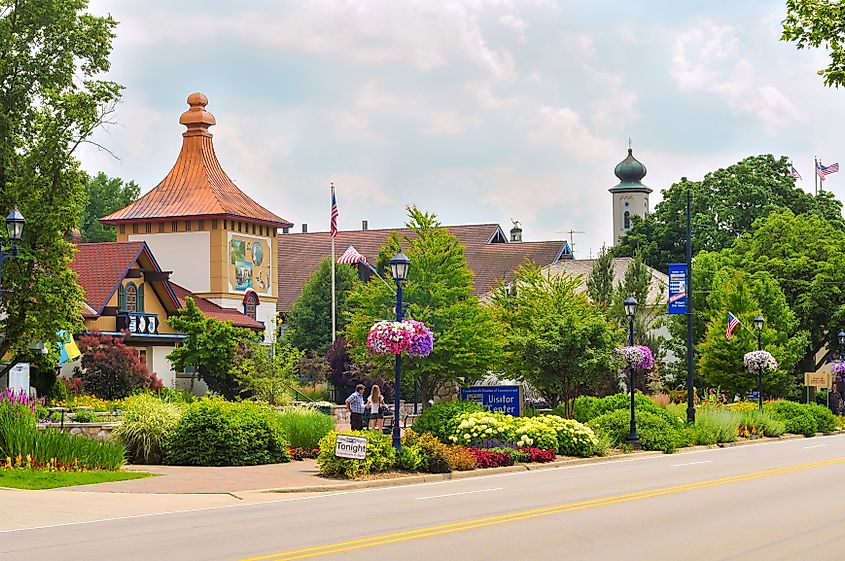
Frankenmuth is home to the world’s largest year-round Christmas store. Bronner’s Christmas Wonderland covers over 320,000 square feet and carries more than 50,000 holiday items, with sections dedicated to tree toppers, German pyramids, and custom ornaments printed on-site. The town was founded in 1845 by Bavarian Lutherans and has maintained a strict visual code that includes half-timbered facades, themed signage, and bilingual street names. Frankenmuth’s identity is tied to controlled cultural replication and long-term family-run businesses that preserve a version of mid-19th century Franconia.
Zehnder’s of Frankenmuth, located across from its competitor Bavarian Inn, serves over 2,000 chicken dinners daily and has remained under the same family management since 1856. The Frankenmuth Historical Museum on Main Street includes interactive exhibits and reproductions of immigrant homes from Neuendettelsau. River Place Shops, a themed commercial complex along the Cass River, hosts the annual Dog Bowl in May and auto-centric Frankenmuth Autofest in September. The Holz Brücke, a 239-foot covered wooden bridge built in 1980 using traditional European methods, connects Main Street to Heritage Park and remains open to foot and vehicle traffic.
Mackinac Island
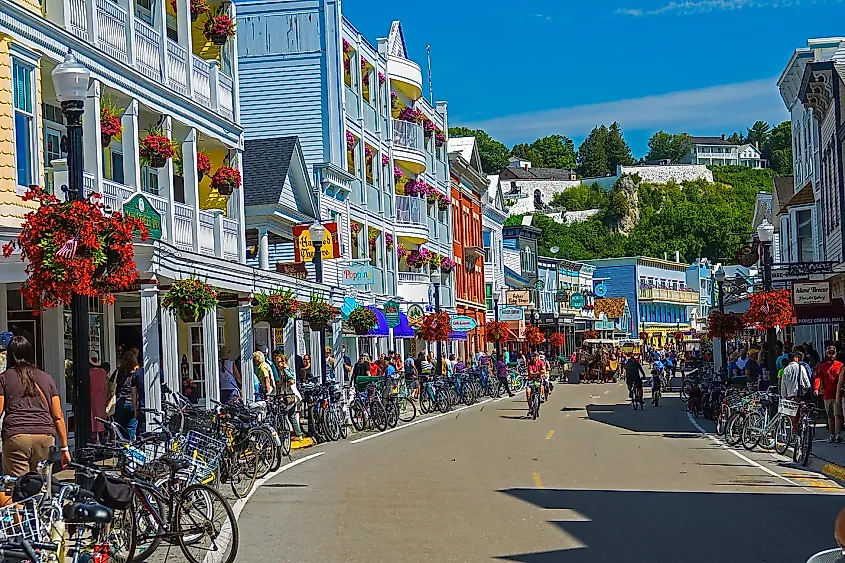
Mackinac Island has banned motor vehicles since 1898. Transportation is limited to bicycles, horses, and walking, enforced by ordinance and monitored by local police. FedEx and UPS deliver by horse-drawn wagon. The island’s economy depends on its managed isolation, with ferry access only from late April through October. The population, under 600 permanent residents, expands each summer with seasonal workers who staff the island’s hotels, fudge shops, and stables. The Grand Hotel maintains the longest front porch in the world at 660 feet, and enforces a dress code after 6:30 p.m.
The Mackinac Island State Park Commission manages 80% of the land, including Fort Mackinac, a limestone military post with scheduled cannon firings and interpretive programs. The Original Murdick’s Fudge, open since 1887, operates on Main Street with viewing windows where confectioners make each batch by hand on marble slabs. The Little Stone Church, built in 1904, holds regular tours during the Lilac Festival each June. For a complete loop of the island’s shoreline, visitors can rent single-speed bicycles from Mackinac Wheels and follow M-185, the only state highway in the country where motor vehicles are prohibited. Mackinac Island’s rules-based culture, infrastructure limitations, and preserved structures sustain a continuous, controlled historic environment.
Hell
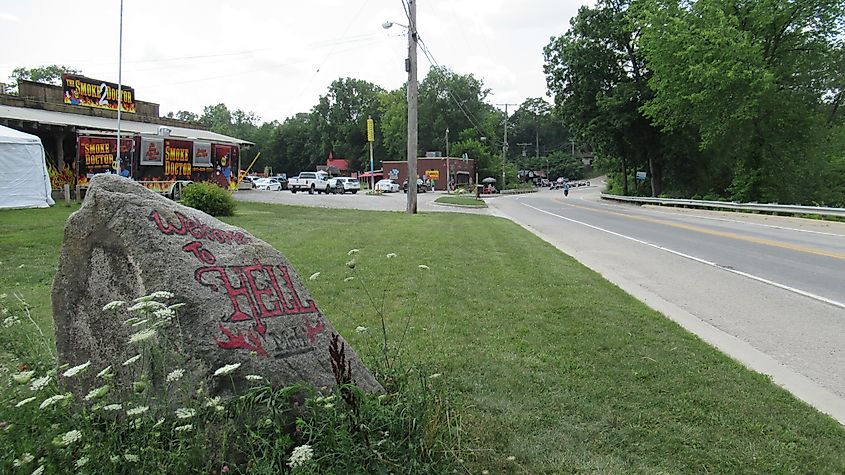
Hell, Michigan has an official post office that allows visitors to send mail “from Hell,” complete with singed edges and themed postmarks. The town’s name is legally recognized and frequently used in wedding certificates, joke diplomas, and promotional materials. With a population under 100 and no formal city government, Hell operates as an unincorporated community structured almost entirely around novelty tourism and self-parody. The town’s name origin remains disputed—attributed to a German phrase or a tavern owner—but its modern identity is fully commodified.
Screams Souvenirs of Hell, located on Patterson Lake Road, includes a mini-golf course, wedding chapel, and “Get Married in Hell” packages certified by the Livingston County Clerk. The Hell Hole Diner serves jalapeño cornbread and “Helltown Hot Wings,” and provides printed “Helluva Breakfast” certificates to diners who complete the full platter. Ice Cream from Hell sells ghost pepper sundaes and “Gravedigger” cones topped with black licorice. Hell Creek Ranch, located just west of town, offers camping, horseback riding, and trail access into Pinckney State Recreation Area. Hell’s continued operation as a functioning joke economy relies on semi-ironic participation, repetition of rituals, and the sustained novelty of saying you’ve been there.
Leland
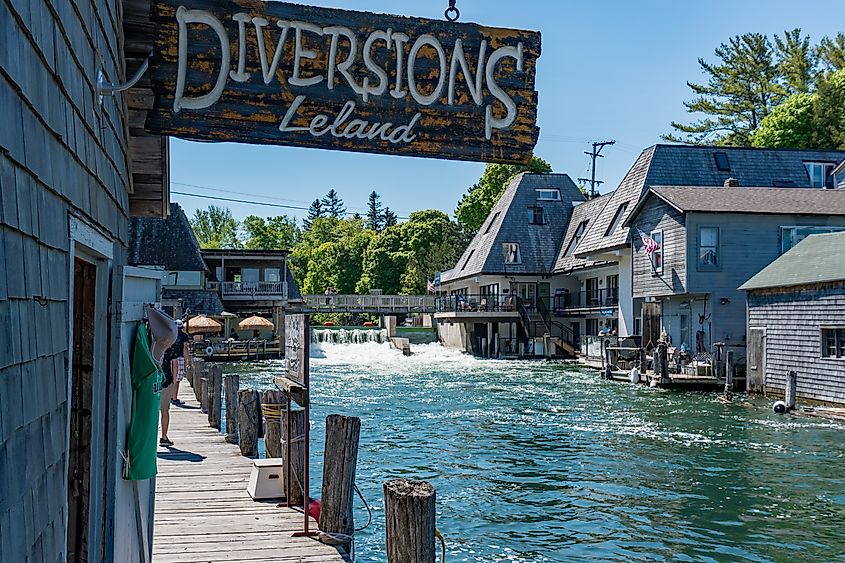
Leland is built on the foundations of a 19th-century fishing village known as Fishtown, where original smokehouses and net sheds are preserved as retail spaces and working docks. Wooden shanties sit directly on the Leland River, and several are still leased to commercial fishing operations that sell lake trout and whitefish directly to customers. The Carlson family has operated from the same shanty since 1904, with their gear and boats maintained in active use. The village was established between Lake Michigan and Lake Leelanau, creating a dual-harbor system that supports both tourism and legacy fisheries.
Visitors can purchase smoked fish sausage and chubs at Carlson’s Fish Market, then cross the wooden bridge to Village Cheese Shanty for pretzel roll sandwiches made with locally produced dairy. Leelanau Historical Society Museum, located next to the harbor, maintains exhibits on Anishinaabe settlements, fur trade routes, and Fishtown preservation. For lake access, Van’s Beach offers views of the Manitou Islands and a short walk to the breakwater lighthouse. Blue Boat Coffee, housed in a converted boathouse, serves cold brew and tart cherry scones sourced from local farms. Leland’s identity as both a functioning port and a preserved shoreline district keeps commercial fishing, heritage infrastructure, and controlled tourism operating in tandem.
Taken together, these nine enclaves prove Michigan’s most compelling narratives unfold far from the interstate. Each town safeguards a micro-economy—wizard supplies, spruce-tip ale, or holiday kitsch—that cannot be franchised or streamed. Visiting in 2025 means engaging with communities still hand-cranking ferries, outlawing cars, or serving breakfast in Hell. Travel deliberately, spend locally, and document respectfully; the quirks that sustain these places survive only while audiences value authenticity over convenience today.
